Can you dig it? Modifying Factors and multi-factor risk
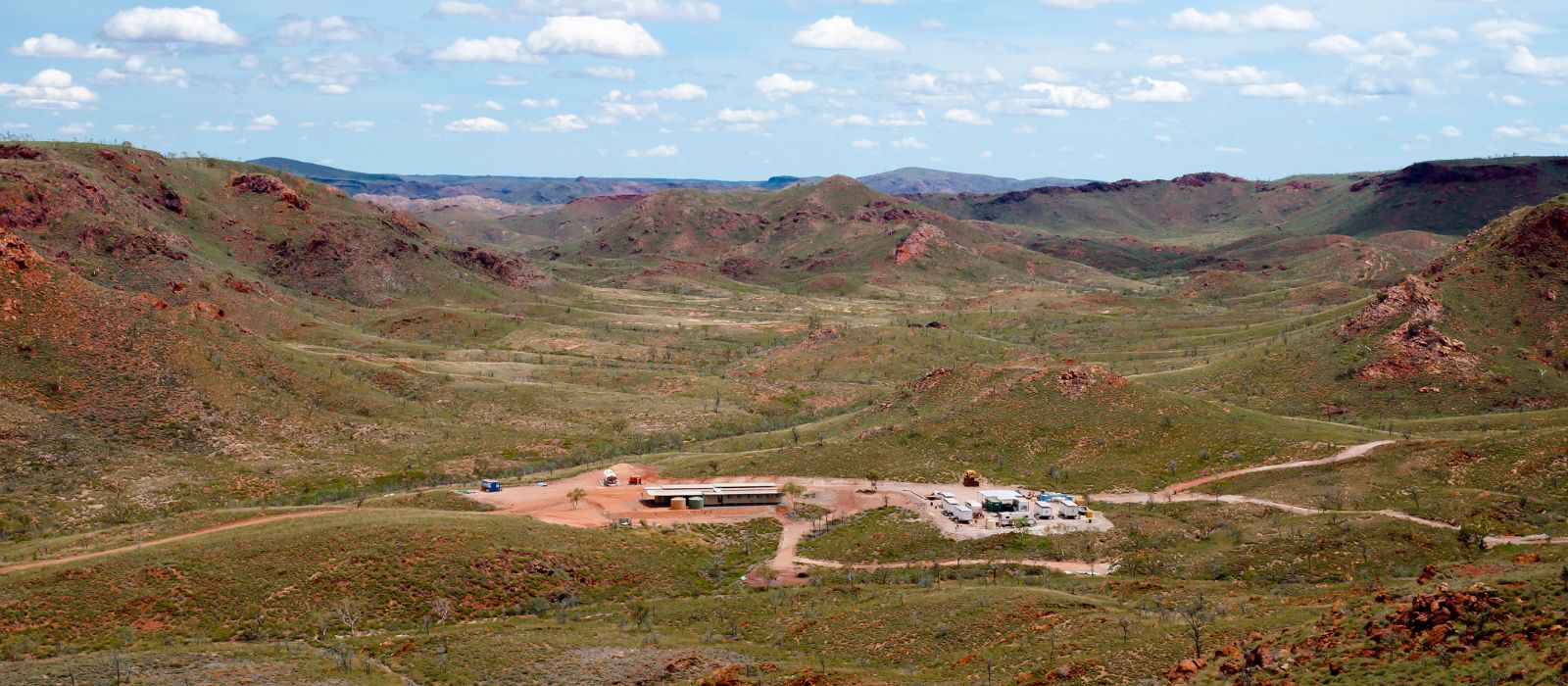
The CRIRSCO (Committee for Mineral Reserves International Reporting Standards) Global Standard Guidelines state that ‘the effect of any Modifying Factor on the likely viability of a project and on the estimation and classification of the Mineral Reserves must be fully explained’ (2019). The 2012 JORC Code (Australasian Code for Reporting of Exploration Results, Mineral Resources and Ore Reserves) has corresponding requirements.
With a review of the JORC Code underway it is a good time to reflect on the emerging centrality of Modifying Factors in evaluation. While the JORC Code primarily relates to Mineral Resources and Reserves, it necessarily overlaps with mineral project design and evaluation. The principle of ‘fully explained’ disclosure that is embedded in the JORC Code complements regulation and compliance to ensure public, regulator and investor acceptability. This leads directly to project viability. To be truly effective, stakeholders need to have confidence in both the claimed procedural and professional competence of project analysts and teams.
More than ever, AusIMM has an important role to play in confirming the Area of Practice competence of professionals claiming that status.
What are Modifying Factors?
The term ‘Modifying Factor’ is common to many industry sectors and is deemed to be anything that can affect business or product viability. In the minerals sector, this includes “mining, processing, metallurgical, infrastructure, economic, marketing, legal, environmental, social, and governmental” considerations (JORC Code, 2012). The JORC Code requires that Modifying Factors are disclosed on an ‘if not, why not’ basis so that investors and other stakeholders have comprehensive knowledge on which to base investment and permitting decisions. Modifying Factors are increasingly material to declarations of Reasonable Prospects for Economic Extraction (RPEE) (JORC Code, 2012).
Escalating environmental, social and governance (ESG) expectations (as Modifying Factors) in the past decade have dramatically changed the risk context for resource development projects. For instance, matters such as land access approvals and closure considerations that were once regarded as secondary are now primary concerns. The ability to identify, manage and appropriately mitigate a full intersectional suite of Modifying Factors is a necessity and an important competitive capability.
Where are we now?
While systems engineering and technical complexity are generally well understood at most resource and infrastructure projects, ESG and other Modifying Factors remain less quantified or absent from early-stage analysis and assessment. At a time when more and much larger infrastructure projects are being proposed and (occasionally) built around the world, many have strikingly poorly quantified financial, environment and public support risk profiles (Flyvbjerg et al, 2019). This trend will intensify as investor and political risk appetites are trending down, while project complexity and societal expectations are trending up (Figure 1).
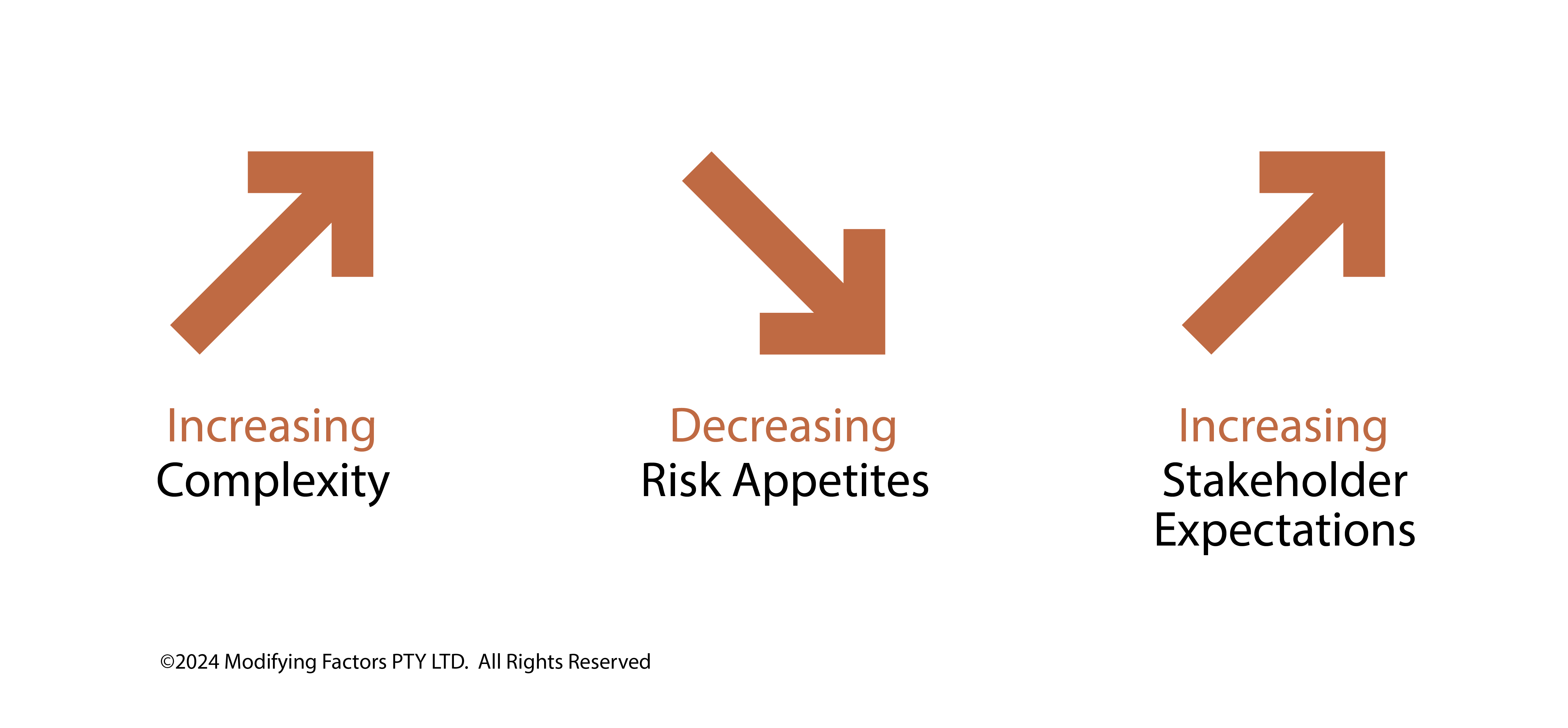
The JORC Code is currently being updated, providing an opportunity to consider lessons learnt since its last update in 2012. Many more Modifying Factors are now material to project viability, including factors such as cultural heritage clearance, land access (e.g. Native Title), approvals, local content considerations, the Global Standard on Tailings Management, decarbonisation targets, climate resilience disclosures, sovereign risk and political instability.
Modifying Factors present an integrated analytical framework that can help inform good understanding of impact and risk frequency, consequence and materiality preconditions for project approval (Figure 2).
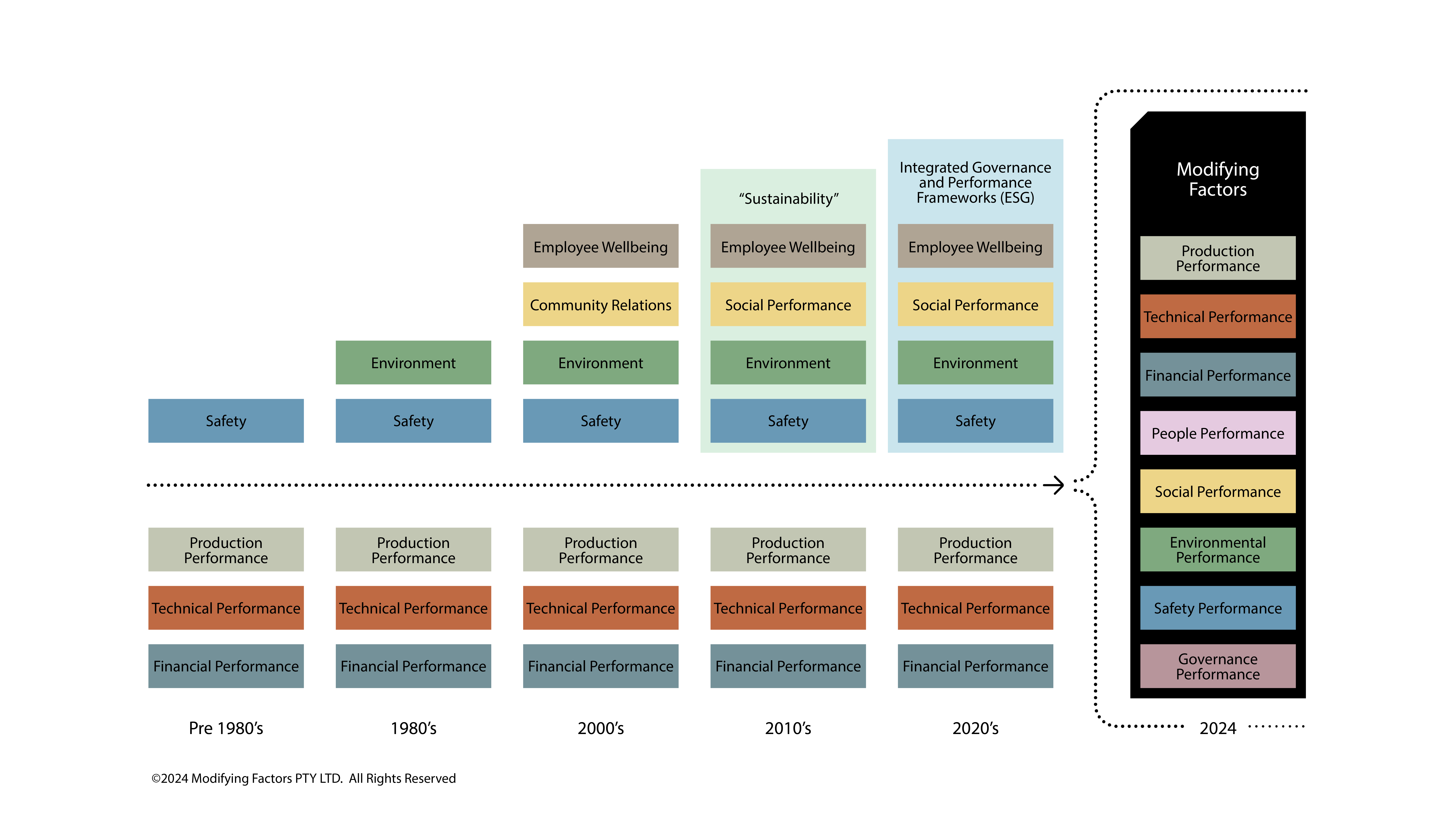
What is the fundamental Modifying Factor risk to project stakeholders?
The fundamental risk that mineral disclosure codes such as the JORC Code are seeking to manage is information asymmetry. Compounding this, for investors, regulators, workforces and host communities, there is a risk that project proponents cannot or will not ‘do what they have disclosed they will do’. While primarily developed and designed for investors, code-compliant disclosures are increasingly important to a broader range of stakeholders to ensure that this fundamental project risk is minimised.
‘Technically feasible’ verses ‘optimally possible’
In project development there is an inherent tension between what is ‘technically feasible’ and what is ‘optimally possible’. The traditional view of project proponents is that there should be a single focus on technical (and therefore financial) viability. This techno-rational perspective oversimplifies what is at stake, particularly where innovation is involved and for mining projects with inherent uncertainty due to long time frames and stakeholder complexity (Crosby, 2014).
The reality is that many Modifying Factors that will be material to project development are outside the control of project proponents. To optimise project value, study teams must consider and attempt to trade-off numerous interdependent Modifying Factors such as land, power, water, mine design and projected operating costs. Data-driven analyses of the many factors in play are used to aggregate an overall assessment of what is ‘technically feasible’.
In practice, how factors are traded-off, whether intended or unintended, involves dependencies and interactions which can be sequential, concurrent, direct, indirect, or cumulative. These are termed multi-factor impacts and, as demonstrated by Valenta et al (2018) and Davis and Franks (2014), result in dramatically amplified uncertainty for project proponents, investors and affected stakeholders alike. As these multi-factor interactions become apparent, or remain latent, static impact assessment models quickly lose their utility.
Dynamic multi-factor impact and risk assessments are essential for a full picture of projects to be constructed. In the absence of a full picture, mitigating responses can be reactive and ill-considered. This creates a cascading ‘domino affect’ whereby the interdependencies between factors further interact, resulting in more adjustments to design and claimed mineral reserve value as projects advance through feasibility.
A material risk is when Modifying Factors that were not visible and/or not considered in early studies can come into play and many solutions that might be deemed ‘feasible’ are often not ‘permissible’. Through all this, project value is steadily eroded away (Figure 3).
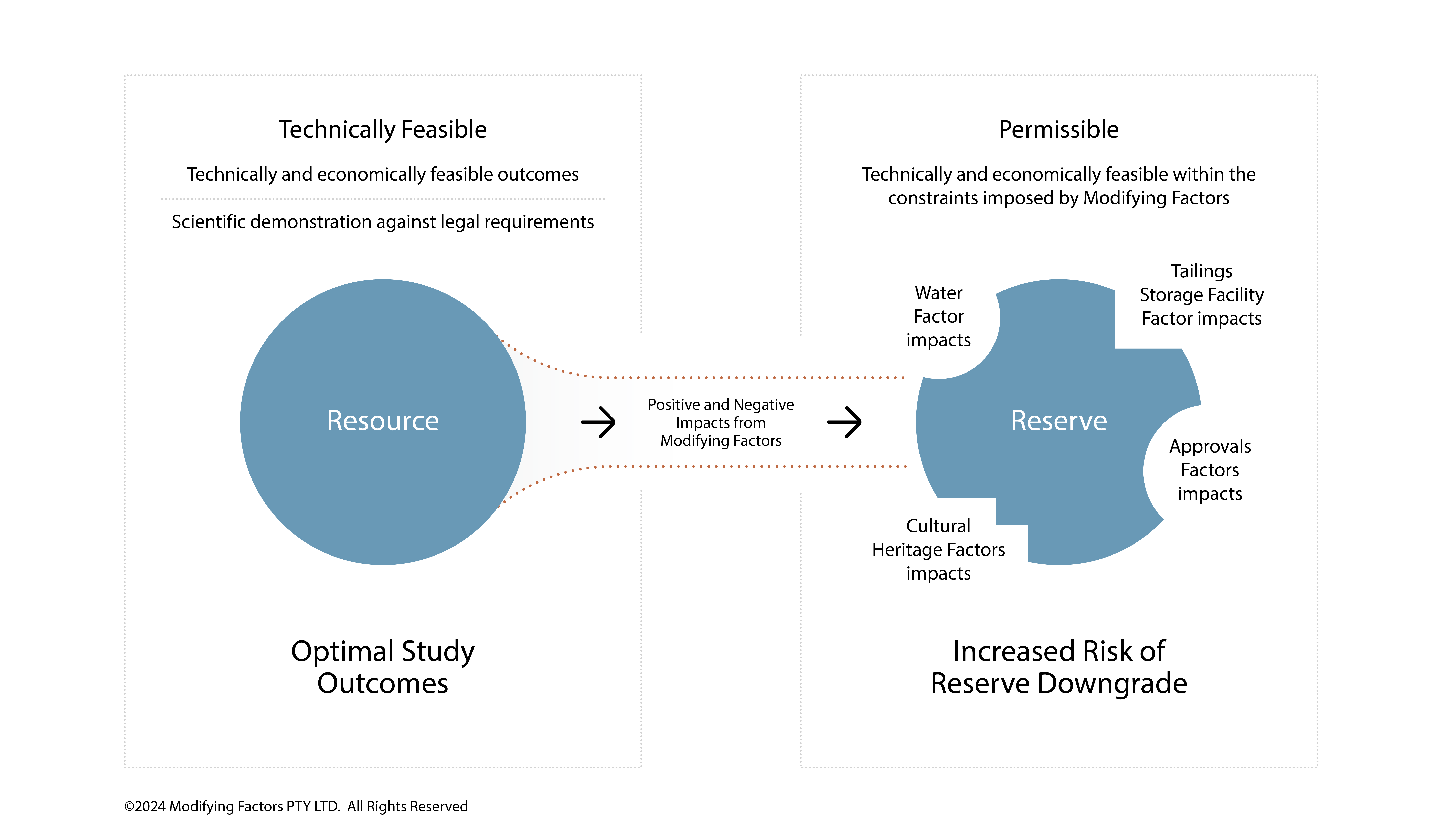
Managing multi-factor risks
Mining project development is capital intensive with multi-decade timelines being normal - on average projects take more than 16 years to transition from initial discovery through mineral resource estimation, to project feasibility, construction planning, construction and eventual production (IEA 2023; Manalo 2023). Multi-factor risk is present and emerging all along the way, with the substantially compounding costs arising from these risks usually not identified, let alone mitigated, at early stages.
Standard project study methodology adopts a narrow ‘inside’ view of what needs to be considered or have worked from the premise that with enough ‘re-design-on-the-run’ all Modifying Factor risks can be ironed out. However, experience has taught us that over long timeframes, and particularly where innovation and/or non-standard technology is being considered and there are multiple interested parties, it is not possible to plan or redesign for everything. As a project progresses, external context and stakeholder expectations inevitably change. Without adaptive capacity in design and systems, these changes lead to a damaging fight to control escalating redesign work and costs. The changes to cost and/or schedule, and/or the necessary insurance and penalty costs that ensue, mean projects are more and more expensive to deliver.
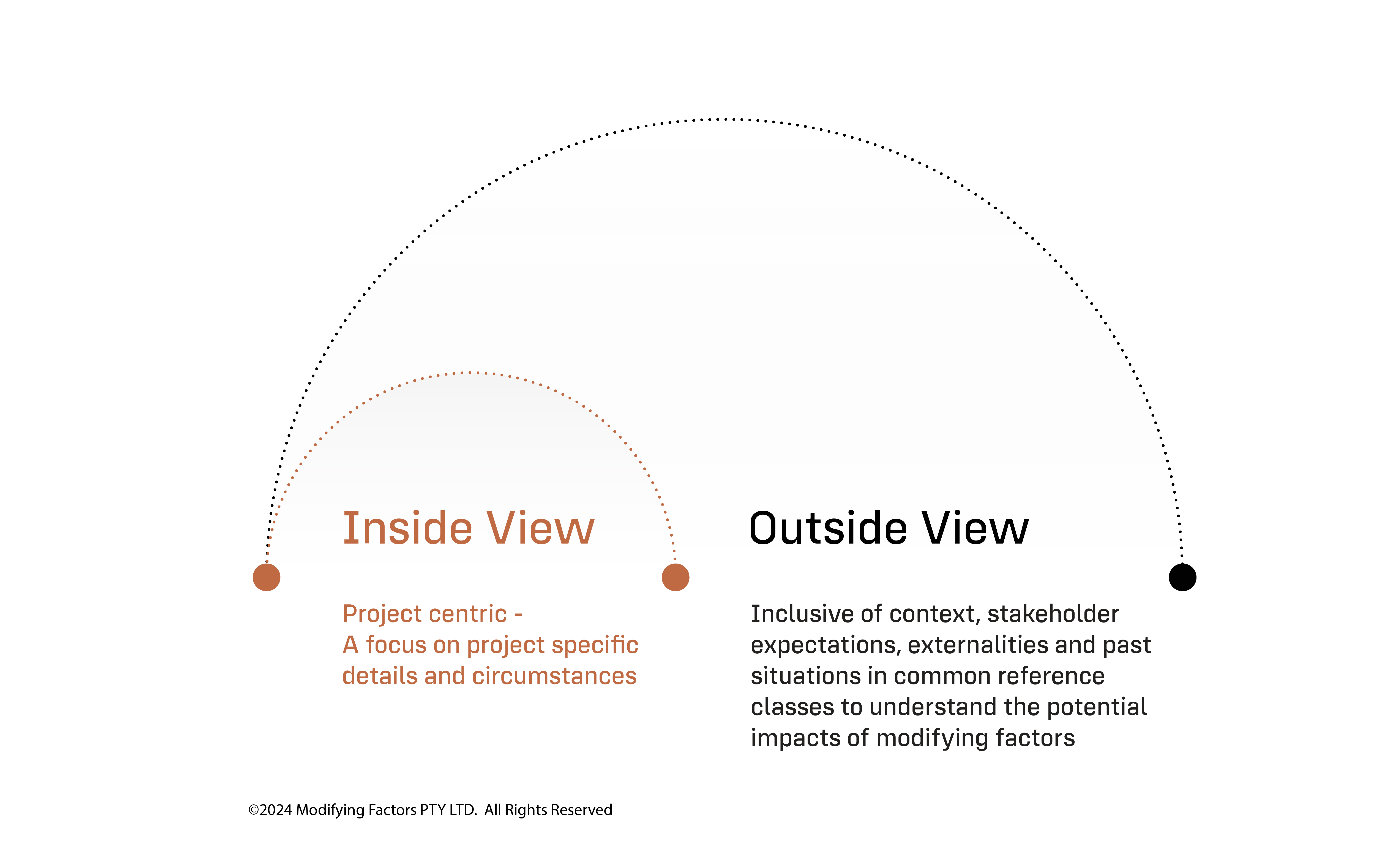
Modifying Factors, project and operational ESG
Proactive, dynamic and contextualised risk and materiality assessments that consider each Modifying Factor drawn from a long checklist help; however, in practice Modifying Factors do not behave in isolation. The multi-factor risk described above can considerably and materially exceed individual factor influence on project design criteria, and hence overall RPEE.
Furthermore, project teams and owners often work on the premise that ‘slight’ defects and shortfalls in design can be forgiven after the event through industrious stakeholder engagement and compensating off-sets. Biodiversity off-sets and ‘paid-out’ resettlement approaches are classic examples. The price for these off-sets can escalate dramatically beyond that envisaged in early naive ‘inside view’ optimism.
Moreover, the real naivety with this thinking is ignoring the high likelihood that having established a pattern of off-setting, empowered and possibly aggrieved stakeholders will keep coming back for more or renege on their negotiated acceptance of potential impacts. There are many mines and facilities struggling with these unforeseen costs infusing into their operating model.
To properly optimise projects, first principles (root-cause) thinking is required to mitigate external impacts and the re-bounding and transition risks associated with changes in regulation, stakeholder acceptance, investor expectation, consumer pressure and preference. Many of these external impacts and re-bounding risks are characterised as ESG considerations, for which meta-analysis studies indicate there are currently some 50 discrete themes (Harvey, 2023). These and other externalities need to be properly assessed by experienced project professionals with the help of carefully considered external advice and participation.
Such proactive analysing and assessing of the consequences for infrastructure design decisions and technology selections can lead to fundamental and latent externalities being identified early and designed out. The more sophisticated analyses can identify multi-factor interdependencies and likely emergent issues to be avoided through early design decisions. This first principles approach is fundamentally different to the ‘design-on-the run’ approach frequently observed.
Meta-risks and multiverse risk
Meta-risks (adapted from Gray, 2002) are the qualitative implicit risks that pass beyond the scope of explicit technical or financial risks, born out of complex interactions between the behaviours of individuals, societies and organisations.
Minerals operations are not just mines. Mines require power, water, transport, communications and waste storage infrastructure, all of which have labour source, suppliers and contractor factors in common, whilst projecting unique impacts on host landscapes and stakeholders. Beyond orebody knowledge factors, such as commodity mix and prices, location and depth, maximising orebody and project value is driven by cause-and-effect relationships between ‘input factors’ (eg cost of capital, cost of materials, labour, energy, licenses and agreements) and ‘output factors’ (eg technical performance, production rates, marketing, sales, royalties, taxes and fees). The permutations are dynamic, seemingly endless and unique to each project.
Furthermore, there are competing and intensifying priorities between different sectors, adding to congestion or ‘chokepoints’, particularly where there are common stakeholders and external constraints. For instance, to develop some classes of linear infrastructure there are up to 29 Modifying Factors in common with the minerals sector that are preconditions or considerations for acceptable economic, social, environmental performance and permitting.
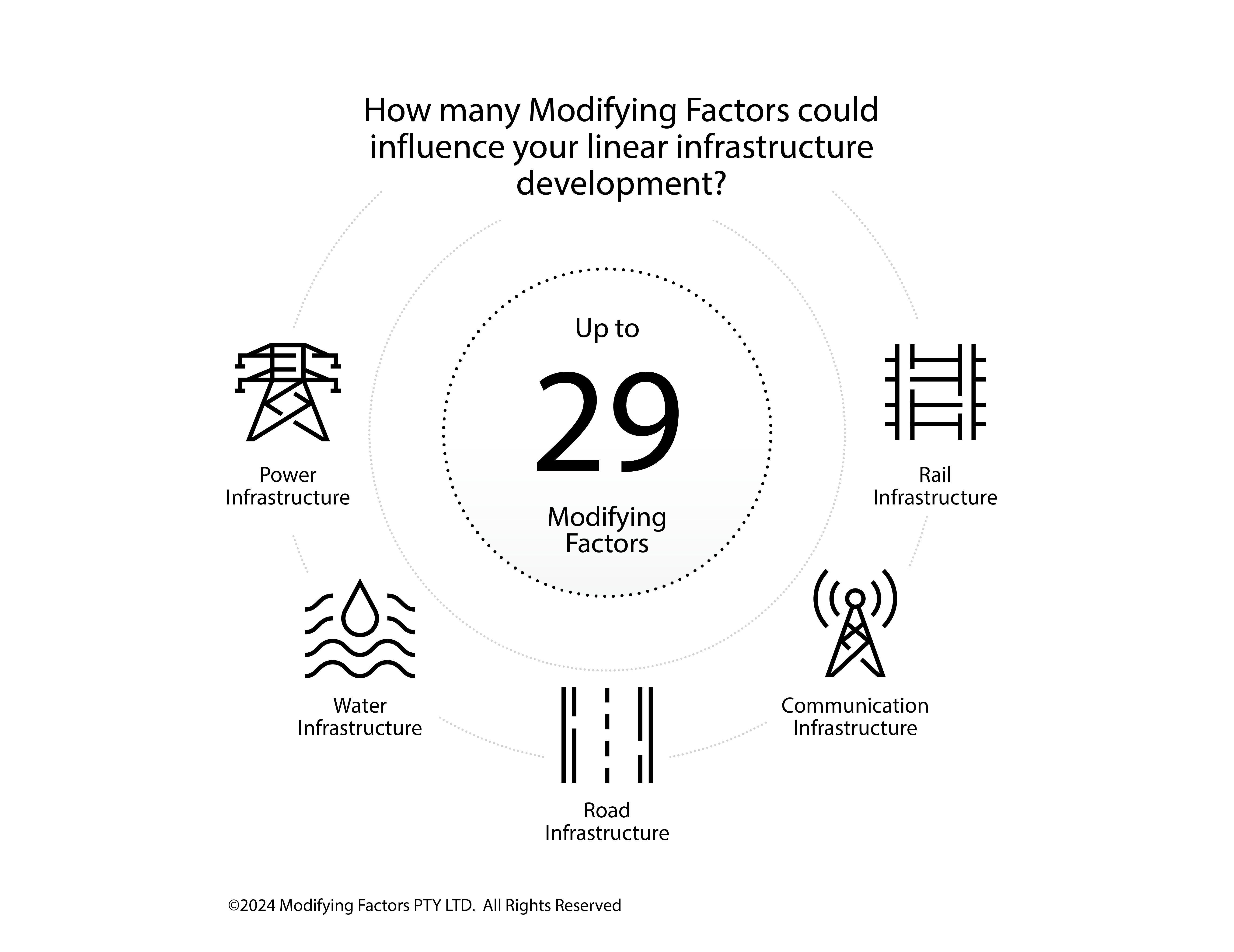
Modifying Factors are also shifting constantly. Overall, a suitable metaphor that might resonate with the emerging generation of minerals professionals is the idea of the ‘multiverse’ that is popularised in on line gaming. This does not mean to say that multi-factor issues can be identified, assessed and solved by an algorithm. To proactively assess, model and manage overarching ‘multiverse’ risk, it is first necessary to define the specific risk appetites and the acceptable thresholds of all crucial stakeholders.
To simplify things for analysis, these risk appetites may be condensed to metrics correlative with ESG performance expectations and commensurate Modifying Factor-type disclosures. Fortunately, such metrics are becoming increasingly defined and harmonised in the (admittedly too many) global ESG-related standards and variously reflected locally specific regulations.
Modifying Factors disclosure versus standards and regulatory compliance
Fundamentally, there are two schools of thought regarding the public de-risking of large-scale projects and operations, be they minerals facilities, transport infrastructure, pipelines, wind turbine installations, solar arrays, civic projects, dams, airports or one of many other forms of human-impacting construction. One is the ‘standards and regulation’ approach, whereby project proponents and operators have their public-interfacing impacts and performance monitored and managed under strictly defined, usually governmental, compliance regimes. The other is a ‘disclosure’ approach, whereby proponents and operators are obliged by various forces, including regulators, markets, insurers and investors, to monitor and regularly report their impact and performance. The JORC Modifying Factor requirement, and project and operational equivalents, are firmly in the latter school. (In reality, disclosure and compliance intersect and a balance of the two is required for maximum public trust).
Well compiled and assured disclosure, available to ‘all the world’, coupled with knowledgeable, sophisticated analysis by interested parties, can reveal far more than a small cohort of stretched compliance inspectors or audits against long lists in third party standards. This is not a say that compliance and audit do not have a place; however, when applied by inexperienced people they become overbearingly long-winded and counterproductive. Things that are material in context can only be forensically examined in a form of ‘open society’ peer review. Furthermore, with genuine expertise and proper analytical systems and disclosure in place, the allure of competitive advantage drives performance and disclosure improvement.
Looking forward
“It is difficult to make predictions, especially when it involves the future” - Niels Bohr
Disclosures that reveal all possible outcomes are impossible. The materiality of Modifying Factors will change at different phases of project development and will be different for different projects in different contexts. On this basis, the design and purpose of Modifying Factor disclosures should be to enable investors and external stakeholders to make their own assessments and decisions based on open disclosure on an ‘if not, why not’ basis. Every resource project’s context and complexity are unique, however there are emerging common Modifying Factors that can directly, indirectly and cumulatively influence project outcomes. Contextualised analysis led by experienced competent people is the key to good disclosure. Equally competent analysts can then make their own assessments and decisions based on client risk appetite.
Conclusion
The JORC Code promotes the principles of transparency, materiality and professional competence to encourage best practice mineral resource estimation and reserve definition. The review currently underway provides a good opportunity to improve Modifying Factor considerations. A strength of the Code is its ability to evolve to address emerging issues and drive improved practice through disclosure benchmarking. Modifying Factor forensic analysis tailored to shifting meta-risk contexts and publicly reporting on an ‘if not, why not’ basis is central to this.
The need for competent processes and people to undertake revealing Modifying Factor analysis is more important than ever. AusIMM, through its peer-review Chartered Professional program covering eight Areas of Practice, has the means to assess the competency of professionals to credibly assess the full suite of Modifying Factors.
Moreover, the active consideration of meta-risk between factors is a capability the sector must further develop. This capability will underpin resources becoming reserves, and deposits becoming producing mines, to answer the key question, can you dig it?
References
Crosby, P. (2014, January). Shaping mega-projects: Practical steps for success (1064). In Mastering Complex Projects Conference 2014 (pp. 132-149). Barton, ACT: Engineers Australia.
CRIRSCO (2019). CRIRSCO International Reporting Template November 2019. URL: https://www.crirsco.com/docs/CRIRSCO_International_Reporting_Template_November_2019.pdf
Davis, R, & Franks, D. (2014). “Costs of Company-Community Conflict in the Extractive Sector.” Corporate Social Responsibility Initiative Report No. 66. Cambridge, MA: Harvard Kennedy School.
Gray, J. (2002) What matters is meta-risks. June, 2002, The Treasurer Magazine, The Association of Corporate Treasurers, London, England.
Harvey, B. (2023) Project and Operational ESG. AusIMM Bulletin October, 2023.
Flyvbjerg, B., N. Bruzelius and Rothengatter, W. (2019) Megaprojects and Risk - An Anatomy of Ambition
International Energy Agency (IEA) (2023) URL: https://www.iea.org/reports/critical-minerals-policy-tracker/promoting-exploration-production-and-innovation
Manalo, P. (6 Jun, 2023) ‘Discovery to production averages 15.7 years for 127 mines’
URL: https://www.spglobal.com/marketintelligence/en/news-insights/research/discovery-to-production-averages-15-7-years-for-127-mines Accessed 12 August, 2023
The Australasian Code for Reporting of Exploration Results, Mineral Resources and Ore Reserves ('the JORC Code') (2012). URL: https://www.jorc.org/
Valenta, R.K., Kemp, D., Owen R.J., Corder, G.D. and L_ebre, E. (2018). Re-thinking complex orebodies: Consequences for the future world supply of copper. Journal of Cleaner Production 220. Pages 816-826, ISSN 0959-6526